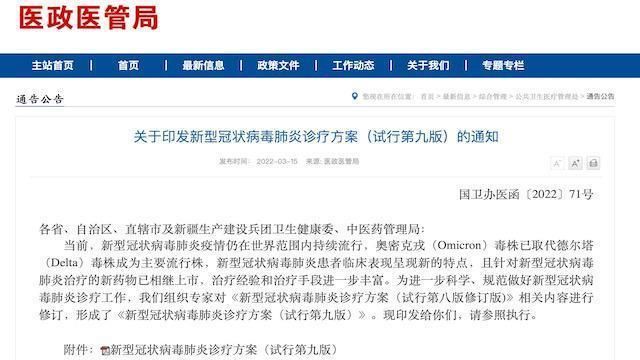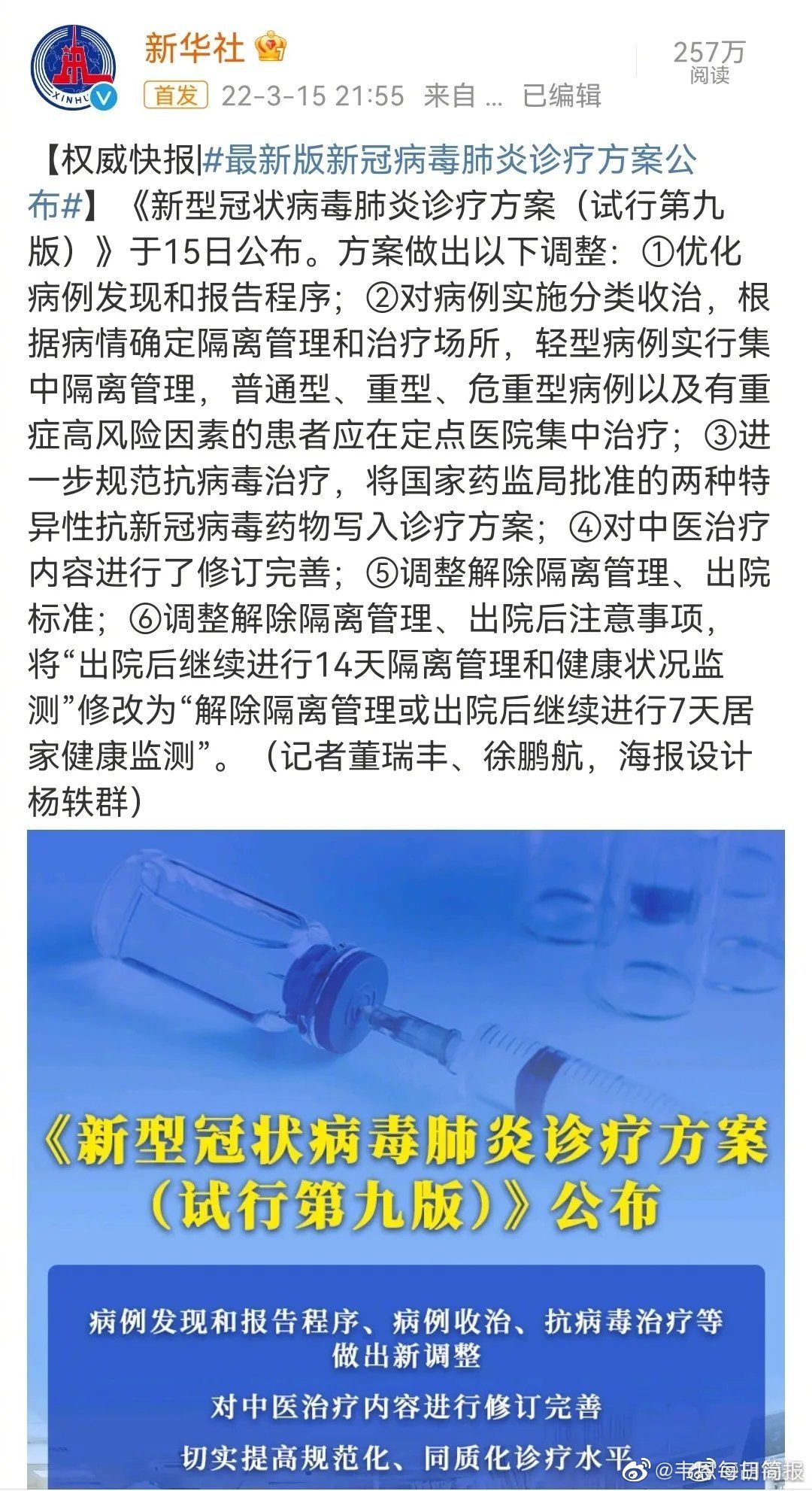The website of the National Health and Health Commission issued a notice on the 15th, and the General Office of the National Health and Health Commission and the Office of the State Administration of Traditional Chinese Medicine issued the “New Coronavirus Pneumonia Diagnosis and Treatment Plan (Trial Version 9)”.

Notice that the novel coronavirus pneumonia is still spreading worldwide, and the Omicron strain has replaced Delta The (Delta) strain has become the main epidemic strain. The clinical manifestations of patients with new coronavirus pneumonia have new characteristics, and new drugs for the treatment of new coronavirus pneumonia have been launched one after another, and the treatment experience and treatment methods have been further enriched. In order to further scientifically and standardize the diagnosis and treatment of new coronavirus pneumonia, the relevant content of the “New Coronary Virus Pneumonia Diagnosis and Treatment Plan (Trial Version 8 Revised Edition)” was revised, and the “New Coronavirus Pneumonia Diagnosis and Treatment Plan (Trial Version 9)” was formed. )” (hereinafter referred to as the plan).
The plan shows that isolation management and treatment places should be determined according to the condition.
Light cases are subject to centralized isolation management, and relevant centralized isolation places cannot isolate inbound personnel, close contacts and other groups at the same time. During the isolation management period, symptomatic treatment and condition monitoring should be done. If the condition worsens, it should be transferred to a designated hospital for treatment; Common, severe, critical cases and cases with severe high-risk factors should be centrally treated in designated hospitals >, Severe and critical cases should be admitted to ICU for treatment as soon as possible, and patients with high-risk factors and a tendency to become severe should also be admitted to ICU for treatment.

The plan makes the following adjustments:
①Optimize case discovery and reporting procedures;
②The cases are classified and treated, and the isolation management and treatment places are determined according to the condition. The light cases are under centralized isolation management, and the common, severe, critical cases and patients with high risk factors for severe cases should be centralized in designated hospitals for treatment;
③ Further standardize antiviral treatment, and include two specific anti-new coronavirus drugs approved by the State Food and Drug Administration into the diagnosis and treatment plan;
④ Revise and improve the content of traditional Chinese medicine treatment ;
⑤Adjust the management of release from isolation and discharge standards, and speed up the process of release from isolation and discharge of patients;
⑥Adjust the management of release from isolation and precautions after discharge, and will “continue 14 after discharge from hospital” “Day isolation management and health monitoring” was revised to “Continue 7-day home health monitoring after release of isolation management or discharge from hospital”.
Why can centralized isolation management be implemented for mild cases of COVID-19?
Cai Weiping, chief expert of the Infectious Disease Center of the Eighth Hospital Affiliated to Guangzhou Medical University, said in an interview that the above classification management was adjusted based on the treatment experience in the past few years. “Mild and asymptomatic patients basically do not need treatment. If there are too many infected people, they can be shunted. Mild and asymptomatic patients can be shunted to Fangcang shelter hospitals, and severe patients can enter the intensive care unit in advance, which is conducive to monitoring and promotes early treatment. “
In addition, Cai Weiping said that imported cases and local cases are not necessarily of the same virus strain, and they should not live together as much as possible to avoid mixing new mutant strains.
(Comprehensive from the website of China Business News, Xinhua News Agency, and National Health Commission)